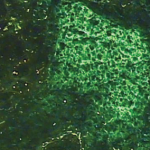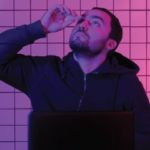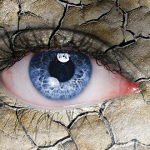None of this would be surprising if Sjögren’s was a rare disease. However, it vies with rheumatoid arthritis (RA) for the dubious distinction of being the most common autoimmune disease. According to the most recent (2008) National Arthritis Data Workgroup, primary Sjögren’s affects up to 3.1 million U.S. adults.1 If secondary Sjögren’s is included, a fairly conservative estimate would be 4 million affected, approximately 1% of the adult population. Yet most of these patients remain undiagnosed. We are simply living under the radar.
There is an emphasis on treating many other autoimmune diseases, such as RA, early and aggressively. In RA, this approach has been shown to improve clinical outcomes. Efforts to identify RA in the “prearthritis” stage have been recently promoted, in the hopes of preventing actual clinical disease. The contrast to the prolonged delays in diagnosing Sjögren’s patients with full-blown disease could not be more stark. There is little incentive to diagnose the disease in a timely manner when it has not been proven that treatment will improve outcomes. It simply has not been studied.
Self-Perpetuating Bias
Perhaps the greatest stumbling block to making the diagnosis of Sjögren’s is the self-perpetuating bias of the medical community that we are just not that sick. This was what I was taught in medical school. This notion seems to ignore the 20–40% of patients with severe systemic manifestations.2 Pain, fatigue, gut dysmotility, and neuropathies are not considered to be severe manifestations. Yet, these extremely common features are frequently far more debilitating than dryness. Many rheumatologists focus on dryness, often ignoring the extraglandular symptoms, particularly fatigue. Almost every Sjögren’s patient I know has heard some version of, “Just be glad you don’t have lupus.” This is about as sensitive as telling a breast cancer patient to be glad that she doesn’t have ovarian cancer. We have an illness that can turn our lives upside down.
More Than Dry
Sicca symptoms are important. I know this firsthand, having severe dry eye disease, including a painful neuropathic component. However, what impacts my life the most is the disabling flu-like fatigue that is seen in 70% of primary Sjögren’s patients.3 This is not normal exhaustion that can be managed with rest and recovery. Because of fatigue, I have had nothing resembling a normal life for the past 11 years. I simply hit the wall by early afternoon every day, even on my best days. During my flares, I am only out of bed (in a total daze) for six to eight hours a day. This bed rest is nonnegotiable. If I push myself too much, the disease spirals out of control, leaving me incapable of performing even simple tasks like running an errand. No amount of willpower or strategizing has allowed me to change this. It has severely affected my family life: as my children were growing up, I stayed at home as they went on vacations with their father, visiting Europe, Canada, and many wilderness areas closer to home. This relentless fatigue does not suit my personality at all. I want to practice medicine. I want to travel, ride my bike, cook great meals, and have an occasional evening out. These are simply not compatible with my current energy budget.
New Criteria Too Restrictive
The diagnosis of Sjögren’s remains controversial and problematic. There is no simple test that is sensitive, specific, and noninvasive. Finding a novel biomarker that can identify Sjögren’s early and accurately will be of enormous benefit. In 2012, the ACR published new and stringent criteria for the classification of Sjögren’s.4 While narrowed criteria may be useful for research, these criteria are unnecessarily restrictive for use in the clinical setting.



